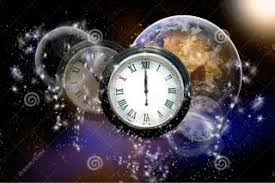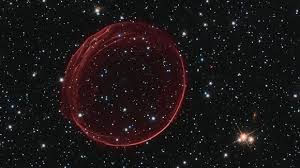TOWARDS THE TRUE NATURE OF TIME
- planck
- Aug 2
- 5 min read
Time is undoubtedly the strangest and most intriguing of physical quantities. While spatial variables can, in principle, take any value, time moves inexorably in a single direction. More than 100 years ago, Einstein demonstrated that time is actually just another dimension of an indivisible four-dimensional entity, and there are even places in the Universe where space and time intermingle and even exchange roles. Yet, despite this, time is distinct from the other spatial dimensions. What is time, really? Why does it flow inexorably into the future? The answers to these momentous questions likely hold the key to solving the deepest problems of fundamental physics. In this article, we will analyze several surprising different facets of time; these facets will act as "clues" to the true nature of time.
Our strange four-dimensional Universe
Our Universe has four dimensions: three spatial and one temporal. To see the difference between space-like and time-like dimensions, just look at the metric that describes our flat Universe (the Minkowski metric):
ds2=dx2+dy2+dz2-dt2. The first difference is obvious: time appears with the sign reversed. As we know, a number can be squared with positive or negative values, which leads us to our first "clue": while spatial dimensions square positive values, the temporal dimension squares negative values. If we allow the temporal dimension to take on complex values, then we get something truly remarkable: by replacing t with it in the previous metric, we get time to behave like the rest of the dimensions. This first clue leads us to a relationship between time and complex numbers.
Time and quantum interference
Let us consider two separate points A and B. For a particle of mass m in vacuum the probability amplitude of propagation from point A to point B is given by:

where :

This involves summing all possible paths between A and B, where each path is given by a probability amplitude (some paths are more likely than others). The key is this: for time-like paths, ds is negative, and therefore the probability amplitudes are complex and interfere; however, for space-like paths, ds is positive, and therefore takes real values, so the amplitudes do not interfere. This brings us to the second "clue" about the nature of time: Is time responsible for quantum interference?
Closed time curves
General relativity allows for solutions that allow for so-called closed timelike curves (CTCs). In certain extreme situations, such as inside rotating black holes, gravity is so intense that space-time is so curved that the time dimension closes in on itself, such that a hypothetical observer starting the journey at point A would return to the starting instant upon reaching point B.

Consider a spacecraft that begins its journey around a CTC at point A. The craft has a clock consisting of an atomic oscillator and a counter that records the number of oscillations. Consider that we start the oscillator at time t0. The oscillator dissipates energy, and therefore the entropy of the system increases . When the ship completes the curve and reaches point B at time t1, it has returned to the initial time instant, which implies that all physical magnitudes at time t1 must coincide with those at time t0. However, during the journey around the CTC, the entropy of the system has increased, making it impossible to match the initial conditions with the final conditions.
There are (at least) three possibilities:
- During a CTC, there can be no increase in entropy, which means that time remains "frozen" and there can be no record of the journey, nor even a memory in the astronaut's brain, since this process would also dissipate energy.
- The ship would reach point B in a different "branch" of the Universe (appealing to Everett's many-worlds interpretation of quantum mechanics) and therefore the departure and arrival conditions are not the same.
- CTCs cannot exist in practice even if they are allowed by general relativity.
In this section we have glimpsed the third clue about the nature of time: time is linked to the increase in the entropy of the system.
Bubbles of nothingness and holographic time
The famous physicist Edward Witten demonstrated in a paper that a space-time like ours, but with an additional dimension curled into a circle, is unstable. At a given moment, due to the quantum tunneling effect, the Universe undergoes a phase transition and decays into a new state in which a black hole appears. Inside this black hole, there is nothing: no energy, no quantum fields, and no space-time. The black hole then begins to expand and consumes the entire Universe. How should we interpret this "bubble of nothingness"?
To try to answer this question, we can turn to the AdS/CFT duality: using this duality, we can construct an AdS Universe with gravity in which a bubble of nothingness spontaneously arises, and study what happens in the gravity-free dual CFT. Physicists have studied this situation in the AdS5/CFT4 case and have found that when the bubble forms on the AdS side, what happens in the dual CFT is a phase change! In this specific case, the phase change consists of an "interruption" or "condensation" of a certain sequence or order characteristic of the CFT. This brings us to the fourth clue: Does time arise as a consequence of a certain order or sequence associated with the dual CFT?
Timeless static universes
Although we don't have a quantum theory of gravity, it is possible to perform certain calculations in low-gravity environments and on scales larger than the Planck length. These studies are called semiclassical gravity theories. One of the best-established formulas within semiclassical gravity is the Wheeler-DeWitt formula:

where psi is the wave function of the Universe and Htot is the total Hamiltonian including gravitational fields and matter fields. In this equation one of the fundamental characteristics of the wave function is that it depends only on the three-dimensional metric and non-gravitational fields, that is, it does not depend on time and Therefore, it is static and timeless. But then, how does time arise in the Universe as we observe? The answer could lie in the relationships between gravitational fields and matter fields. In a paper presented in 1931 (Proceedings of the Cambridge Philosophical Society, 27, 553–560, 1931), Neville Mott explains how the atom+alpha particle system is initially described by the time-independent Schrodinger equation; however, when analyzing the state of the alpha particle , a directional derivative appears that marks a specific temporal direction and allows the atom to be described through the time-dependent Schrodinger equation. The alpha particle represents the gravitational part, while the atom represents the degrees of freedom of matter. The key idea of this work is important because it is repeated in the vast majority of systems studied in the semiclassical approach: time emerges from the separation between two subsystems: gravitational fields and matter fields. The former define the time relative to which the latter must evolve. This gives us the fifth and final clue: Does time arise in our timeless Universe as a consequence of the fundamental relationship between matter and gravity?








Comments